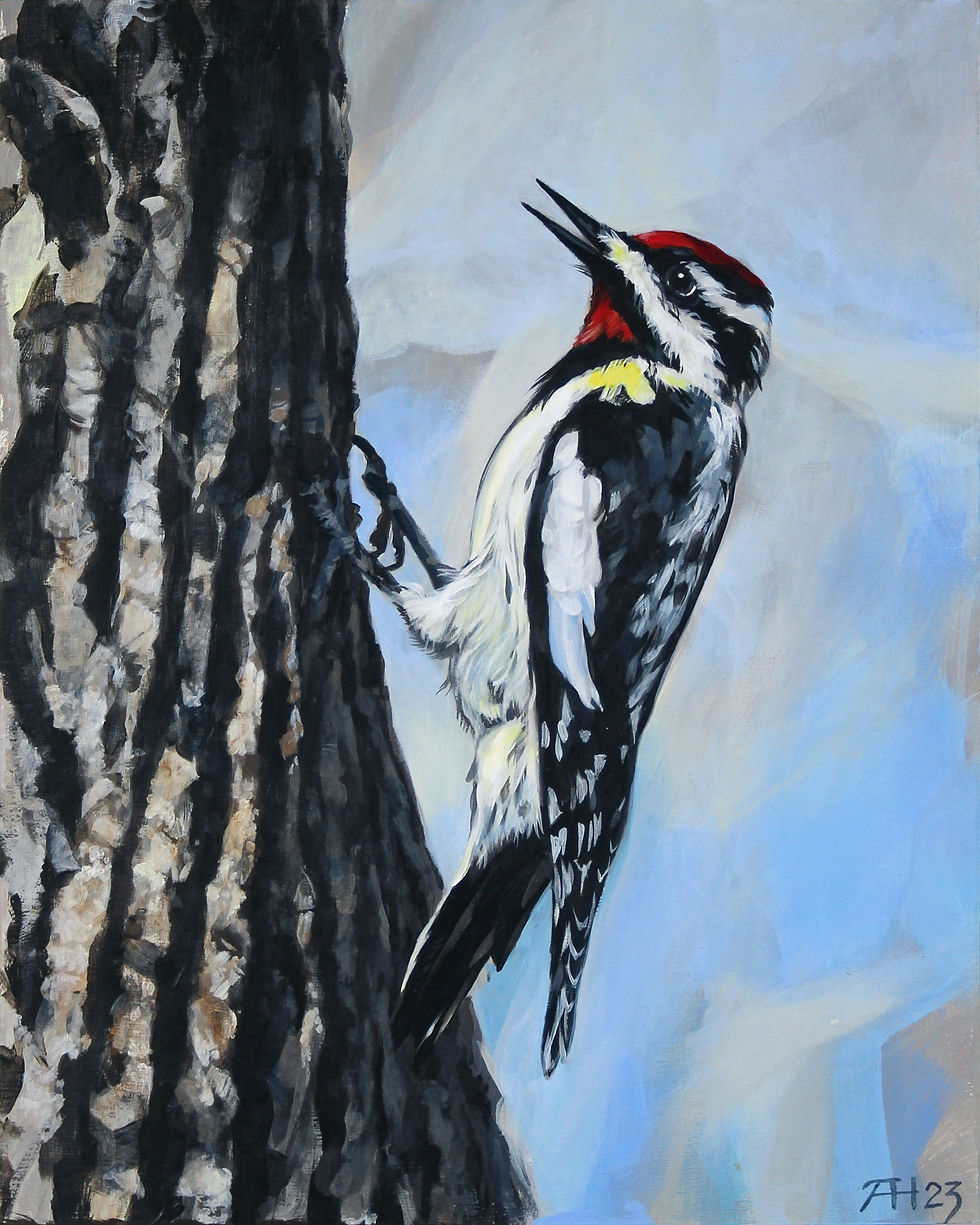Sapsucker ascent
- a-htim
- Sep 20, 2023
- 1 min read

They’re leaving now and heading south. Some go just as far as Connecticut, but others migrate as far as Panama. They will be back next May to breed right here in my backyard or as far north as Alaska. Each year I hear the baby sapsuckers screaming from their nests while the adult birds gather their breakfast.
Like so many of my paintings, I captured the reference on the rail trail behind my home in West Pawlet. These birds move quickly up and down the bark in search of insects, so I was lucky to catch this one mid-stride. He defied gravity as he ascended, using his tail as a prop. Looking closely at his talons (zygodactyl feet, consisting of four toes, two facing backward and two facing forward) it’s easy to see how he rises effortlessly, leveraging tiny footholds as he goes.
Like some human Vermonters, these birds spend a lot of time cultivating their favorite stands of maple. But they love any tree with high sugar concentrations in their sap: paper birch, yellow birch, sugar maple, red maple, and hickory. Drilling a series of holes with that powerful beak, they feed on the sap with their long tongues. Sometimes they need to run off poaching hummingbirds who find the sap wells unguarded. A bonus meal of ants caught in the sticky sap wells completes their diet along with some fruit in season. Like the waxwings, they are not always loved by orchard owners.
I painted this yellow-bellied sapsucker at life size on an 8x10-inch birchwood panel.



Comments